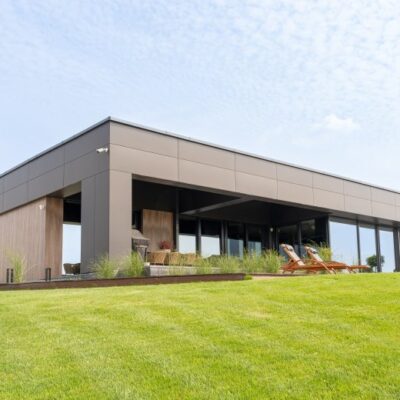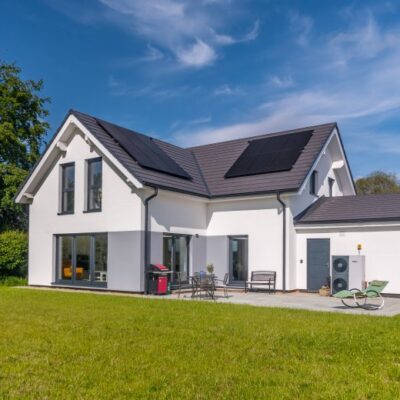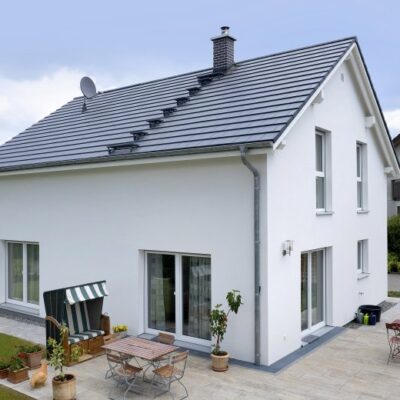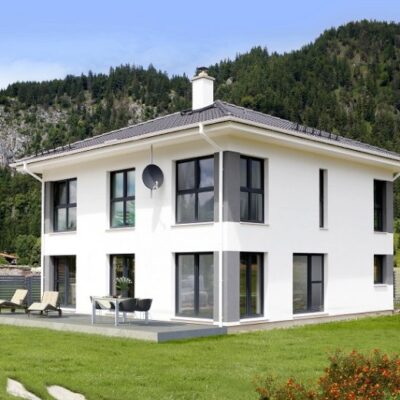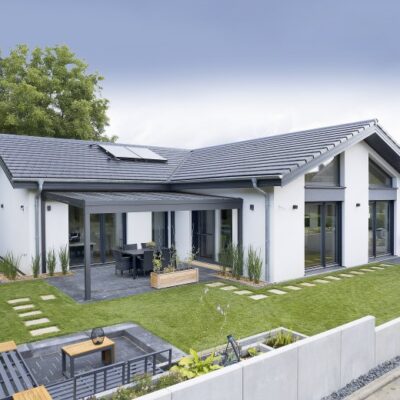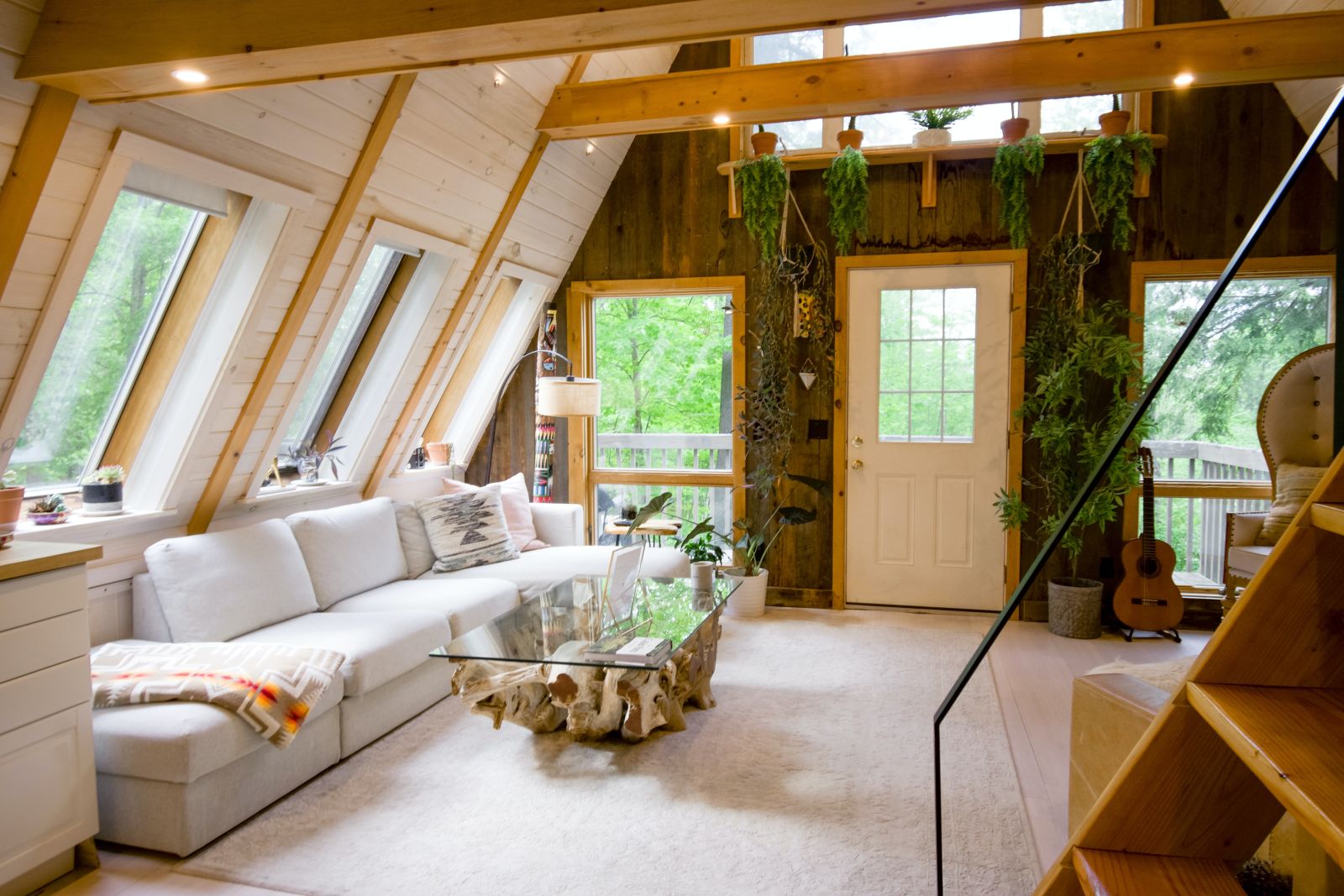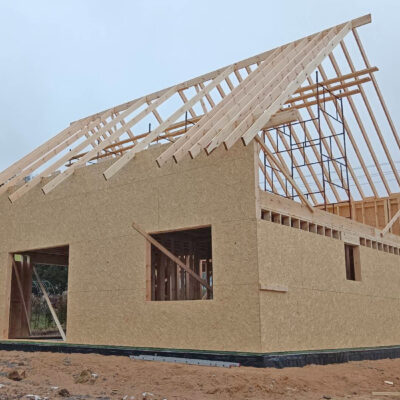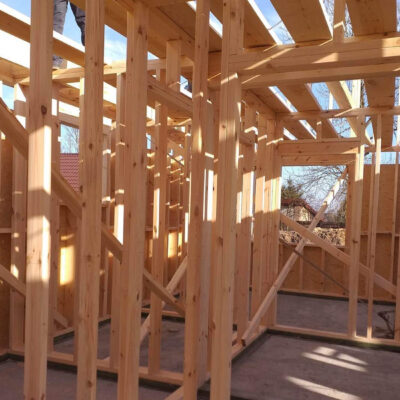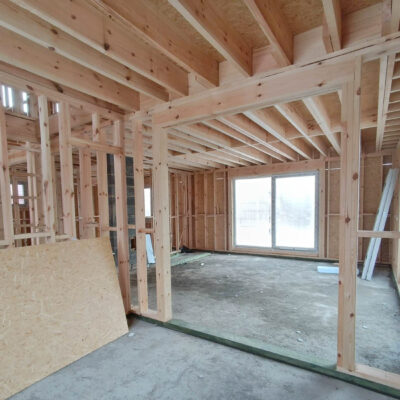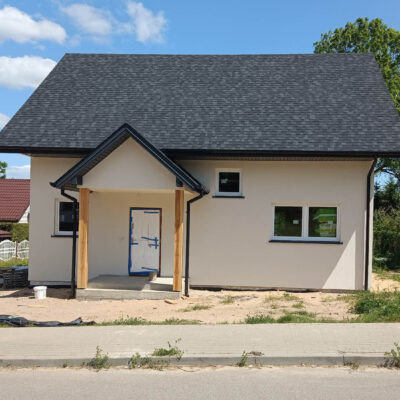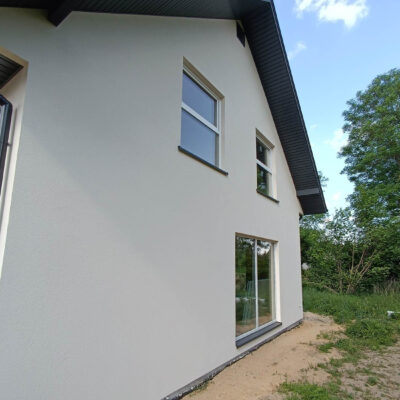Wooden houses – top 7 advantages
People who are not familiar with the building industry may associate wooden houses with picturesque mountain cottages or traditional rural huts found in and around Białystok and other areas. Meanwhile, timber technology is also a modern method of house construction that utilises wood as the main structural element.
Timber-frame houses can be built on site, while prefabricated houses can be built on the factory floor and then assembled on a plot of land designated by the investor.
The timber-frame system is a method that has undeniable advantages which contribute to its popularity. The Podlaskie Voivodeship already has quite a few companies involved in the construction of houses using this technology, which is garnering more attention from investors every year. Prefabricated timber technology is also gaining in popularity. It is not as big a market as, for example, Germany, but there are many indications that it will develop.
This article will not go into too much detail on the differences between the basic types of timber-frame technology or precisely describe prefabrication. We will focus on why wooden houses generally stand out and why they can be a great alternative to brick-and-mortar technology.
Ecology and sustainability
One of the greatest advantages of this method is that it is environmentally friendly. Wood is a natural and renewable resource that comes from sustainably managed forests. Building timber houses reduces carbon dioxide emissions, because wood stores this gas, and does not emit it during production, as in the case of other construction materials.
Shorter construction time and no seasonality
Timber-frame technology allows for a significant reduction in construction time compared to the brick-and-mortar method. The structural elements are prepared in advance, allowing the construction site to be prepared at the same time, followed by quick assembly and finishing of the work. A shorter construction time also is also the product of a lack of seasonal constraints – construction can take place regardless of the season, even in winter. The exception is earthworks for the foundation, where the soil may not be frozen.
Depending on the contractor and the degree of prefabrication, construction works take from 3-4 to 8-9 months. This estimate in fact depends on individual factors, such as the complexity of the project or the organisation of the work of individual teams. In practice, timber frame technology certainly reduces construction time, prefabrication even more so.
Energy efficiency
Wood has very good insulating properties, which translates into better thermal comfort inside the house. Wooden elements do accumulate heat, but rather form a neutral barrier which, in winter, retains warmth inside and protects the interiors from excessive heat in summer. In addition, the insides of walls and roof across the entire surface are filled with thermal insulation (usually mineral wool). These two elements mean that less energy is needed to heat or cool the house, which translates into lower fuel consumption and lower energy bills when using a heat pump in the winter or air conditioning in the summer.
Architect Anna Łukaszuk, M.Sc., Regional Representative of Danwood S. A., discusses the advantages of prefabricated houses in terms of energy efficiency:
The energy efficiency of houses based on a wooden structure does not end with the insulating properties of the construction materials. In order to optimise energy consumption at every stage of the building’s life and operation, prefabricated houses are designed using latest energy efficiency standards, advanced installations, such as heating systems, mechanical ventilation with heat recovery, or intelligent control of electricity and lighting in the house. This not only reduces maintenance costs, but also helps to minimise the environmental impact of the building. Moreover, the preparation of all elements of the house in the factory, including: ready-made walls with windows, external doors, and blinds, under controlled conditions and with high quality standards, allows for precise assembly of elements at the construction site. This obviously results in tighter buildings and minimises heat loss resulting from energy leaks and thermal bridges.
The energy efficiency of houses in prefabricated timber houses is not only an economic advantage for the owners, but also an important step toward a sustainable and conscious use of energy resources. This approach supports the global drive to reduce greenhouse gas emissions and promotes a green lifestyle, becoming increasingly attractive to environmentally conscious investors.
Flexibility of design
The construction of timber-frame houses offers great flexibility in design. It is possible to easily adjust the size, shape, and layout of the rooms according to the individual preferences and needs of the customer. This allows each home to be unique and meet the needs of its residents.
Friendly microclimate
Wood has the property of self-regulating its moisture content. It absorbs or gives off moisture to the environment – depending on ambient humidity. This creates a healthy microclimate that is difficult to achieve with other building materials.
Lightweight construction
Compared to concrete or bricks, wood is a light material. This feature allows for the construction of houses in areas with a weaker bearing capacity of the soil, which in turn can reduce the costs associated with reinforcing the foundations. In addition, easier transport and assembly of wooden elements reduces CO2 emissions associated with construction.
Relatively low construction costs
The construction of timber-frame houses can be more cost effective compared to traditional building methods. The speed of construction and the reduced amount of spent construction materials reduce investment costs – even despite the increase in the prices of building materials in recent years. Of course, the costs of building each house – whether in wood or masonry technology – are a very individual matter and depend on the materials chosen by the investor. However, it is worth emphasising that a timber frame house can be cheaper than one built using a traditional method.
Both the timber frame and prefabricated technology have many advantages, which contribute to their increasing popularity. Ecology, speed of construction, excellent thermal insulation (and also – not mentioned earlier – acoustic properties), flexibility of design, lightness of construction, aesthetics, durability, and optimal costs are factors that attract investors looking for a comfortable and environmentally friendly place to live.
The unconvinced may be encouraged by the fact that prefabricated modules made using wood technology are used to build entire multi-family housing estates. This solution is very popular, for example, in Norway, but multi-family buildings made using this technology also exist in Bielsk Podlaski, Poland, among other places.
Author
Joanna Buharewicz
konsultacja merytoryczna: Danwood S.A.
Photos
Danwood S.A.
Joanna Buharewicz
